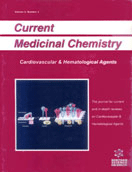Abstract
Since many of antiarrhythmic drugs can act on variable ion channels of cardiac myocytes, these compounds may also play a role in the activity of similar ion channels expressed on the vascular smooth muscle cells. In contrast, some of these ion channels expressed on vasculature have different subtypes of the channels, indicating that antiarrhythmic drugs may differentially affect ion channels on cardiac myocytes and vascular smooth muscle cells. Therefore, it is crucial to note the effects of antiarrhythmic drugs on the regulation of vascular function. Previous studies using isolated blood vessels as well as cultured vascular smooth muscle cells indicate that antiarrhythmic drugs have some modulator effects on K+ channels expressed on the vascular smooth muscle cells. In addition, this modulation may be modified and dependent on the sort of stimuli, including those of pharmacological and pathophysiological. The K+ channel is one of the most important ion channels modulating vascular function to preserve the organ blood flow including that of the brain as well as the heart, and that several available K+ channel openers are expected to treat cardiovascular disorders, including hypertension, ischemic heart disease. Therefore, these results may provide us a hint to understand the advantage and / or disadvantage of these compounds on the v ascular function.
Keywords: artery, antiarrhythmic drugs, blood vessels, channels, vasorelaxation
 2
2













